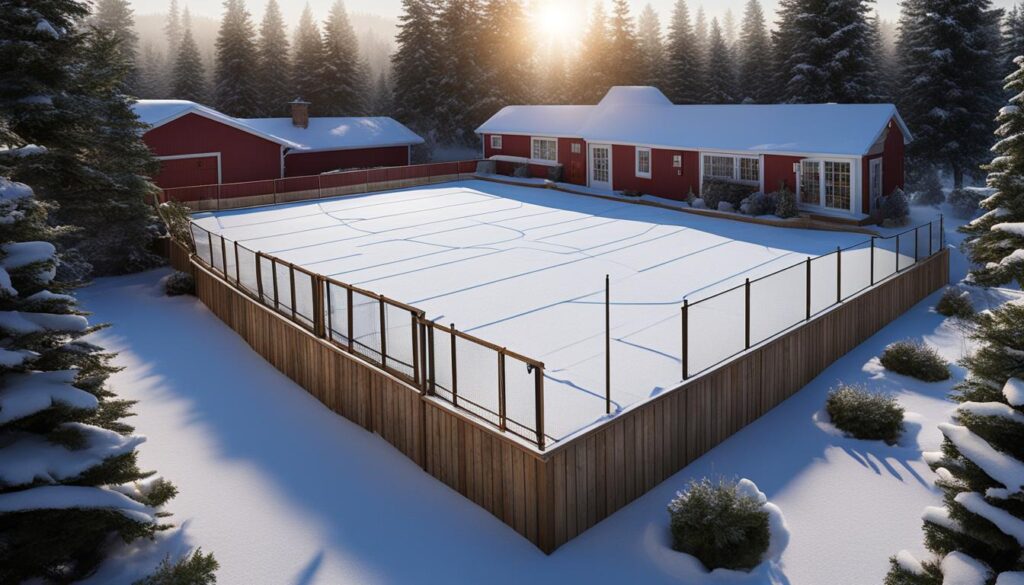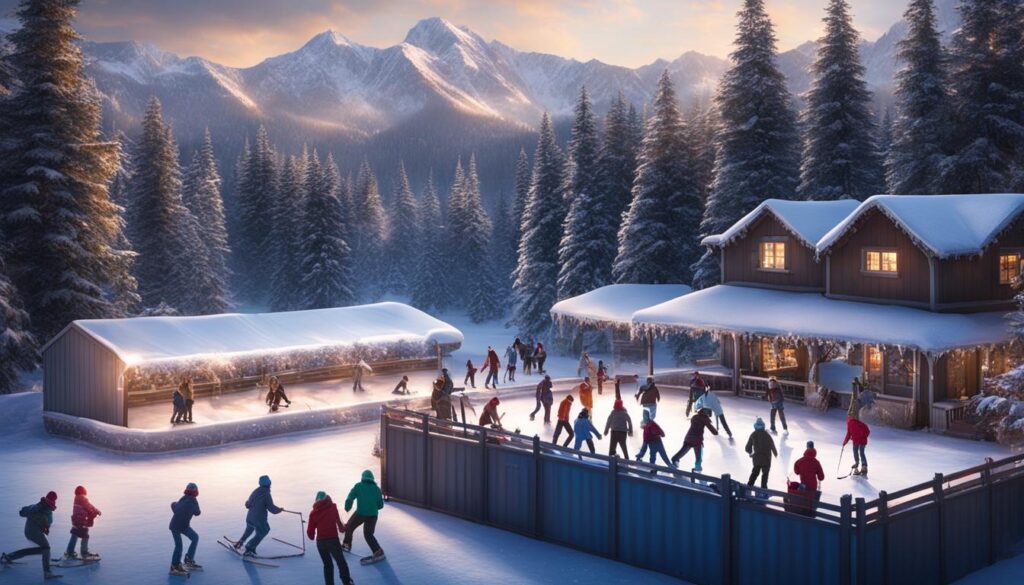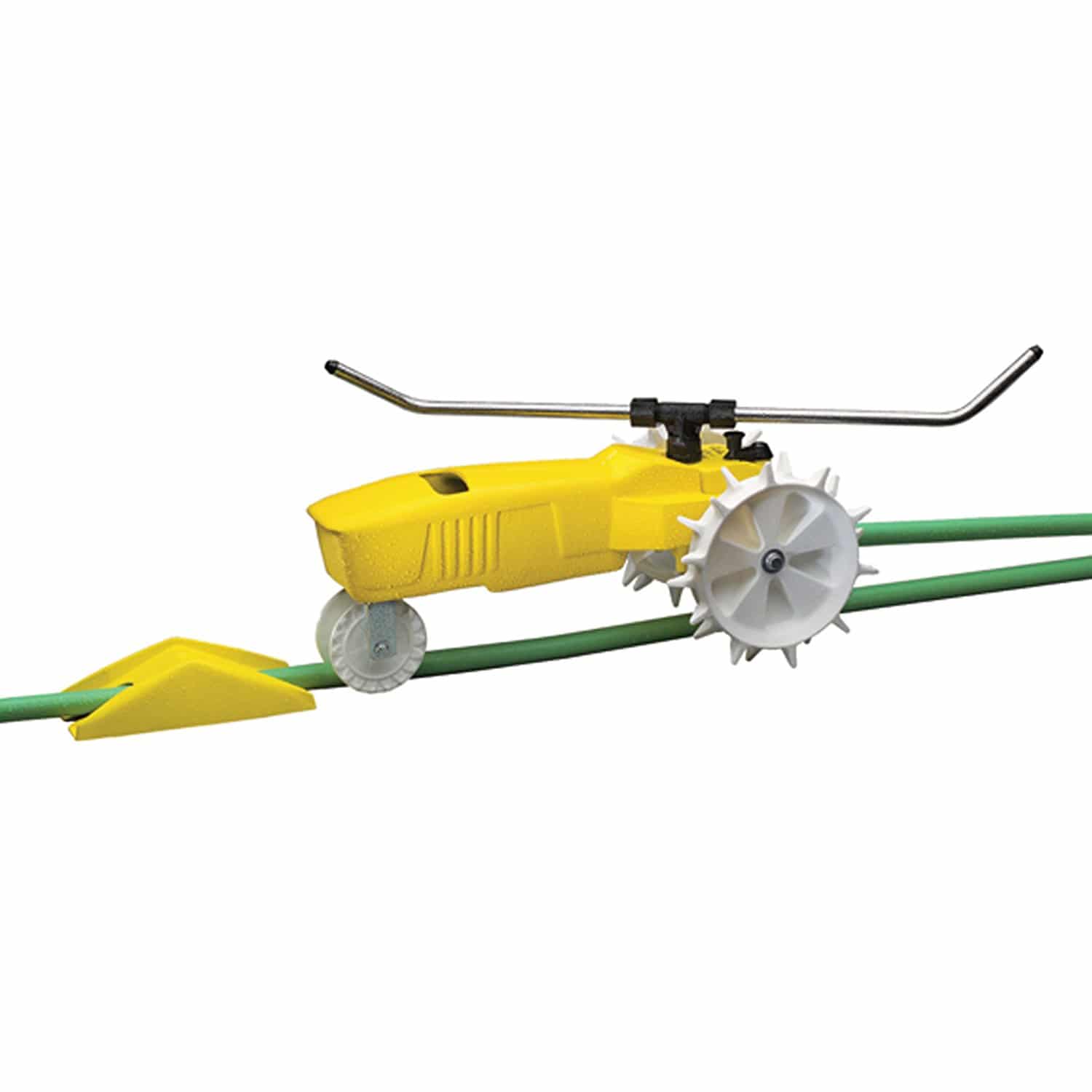Building a backyard ice rink can provide you and your family with hours of fun and exercise during the winter months. In this ultimate guide, we’ll discuss the costs, materials, and legal considerations of creating your own backyard ice rink. Whether you’re a hockey enthusiast or just love skating, this guide will help you build, maintain, and enjoy your very own rink effortlessly.
Post Summary:- Building a backyard ice rink can be a cost-effective way to enjoy winter sports in the comfort of your own home.
- The cost of a backyard ice rink can vary depending on factors such as size, materials, and whether you build from scratch or buy a kit.
- Consider the dimensions and ground preparation when building the rink, and choose between real or synthetic ice based on your budget and maintenance preferences.
- Legal considerations such as homeowners association rules and building permits may apply, so be sure to do your research before starting the project.
- Follow tips and tricks for selecting the right spot, bracing the rink, installing the liner, and maintaining the ice for a smooth and enjoyable skating experience.
Costs and Materials
Building a backyard ice rink can be an exciting project, but it’s essential to consider the costs and materials involved. The total cost of creating a backyard ice rink can vary depending on several factors, including whether you choose to build it from scratch or buy a kit, the size of the rink, and the type of ice you prefer.
If you decide to build the rink from scratch, you can save some money on materials. Building materials like plywood and stakes can cost around $500 or less. On the other hand, purchasing a kit can range from $1,000 to $6,000, depending on the size and quality of the kit.
To create an ice rink, you’ll need a properly sized and thick liner to hold the water. The cost of a liner can range from $100 to $1,200. Additionally, you may want to consider optional accessories like bumper caps and kick plates, which can be purchased separately at an additional cost.
Here’s a breakdown of the potential costs:
| Item | Price Range |
|---|---|
| Building from scratch | $500 or less |
| Kit | $1,000 – $6,000 |
| Liner | $100 – $1,200 |
| Optional accessories | Additional cost |
Remember to consider your budget and the size of the rink you want when calculating the costs. It’s also important to factor in long-term maintenance expenses for a real ice rink, such as electricity costs for refrigeration systems or occasional resurfacing. If you opt for a synthetic ice rink, there may be fewer maintenance costs, but the initial investment will be higher.

Comparing Real Ice and Synthetic Ice
One of the major decisions you’ll need to make when building a backyard ice rink is choosing between real ice and synthetic ice. Real ice is the traditional choice and can provide an authentic skating experience. However, it requires more maintenance and may have additional costs associated with refrigeration systems in warmer climates.
Synthetic ice, on the other hand, is made from a high-density plastic material that allows for skating without the need for refrigeration. While it requires less maintenance, it can be more expensive upfront. Synthetic ice can also be used year-round, making it a versatile option for those who want to enjoy their backyard rink in all seasons.
Consider your budget, climate, and maintenance preferences to determine which type of ice is best for your backyard rink.
Building the Rink
When it comes to building your backyard ice rink, there are several steps you need to follow to ensure its success. The first step is to determine the dimensions of your rink based on the available space and intended use. Smaller rinks are suitable for young children, while larger rinks are ideal for older children and adults. Once you have decided on the dimensions, it’s time to prepare the ground.
Ground preparation is crucial for a smooth rink. Clear the area of any debris or objects that could cause unevenness. Use a level to ensure that the ground is flat, and consider placing a layer of sand or gravel to provide a stable base for your rink. This will help prevent any shifting or sinking of the boards or walls during freezing temperatures.
Next, it’s time to assemble the boards or walls of your rink. You can use materials like plywood and stakes to create a sturdy structure. Follow the instructions that come with rink kits if you are using one, or find detailed instructions online if you are building from scratch. Make sure to secure the boards tightly and evenly to prevent any leaks once the rink is filled with water.
Finally, you can install the liner to create a watertight seal for your rink. The liner should be properly sized to fit the dimensions of your rink and thick enough to withstand the weight of the water. Secure the liner to the boards or walls using bungee cords or other fastening methods. Make sure to smooth out any wrinkles or folds in the liner to ensure an even surface for skating.
Building the Rink – Step by Step
| Step | Description |
|---|---|
| 1 | Determine the dimensions of your backyard ice rink based on available space and intended use. |
| 2 | Prepare the ground by clearing any debris and ensuring a level surface. |
| 3 | Assemble the boards or walls using materials like plywood and stakes, following instructions from a kit or online resources. |
| 4 | Install a properly sized and thick liner to create a watertight seal for your rink. |
Building your own backyard ice rink can be a rewarding project that provides endless hours of fun for you and your family. By following these steps and taking the time to properly build and prepare your rink, you’ll be able to enjoy the thrill of skating right in your own backyard.
Choosing Ice Type: Real or Synthetic
When it comes to creating your backyard ice rink, one of the most important decisions you’ll need to make is choosing the type of ice: real or synthetic. Each option has its pros and cons, so it’s essential to consider factors such as cost and maintenance before making your decision. Let’s take a closer look at the characteristics of each ice type.
Real Ice
Real ice is a popular choice for backyard rinks due to its lower initial cost compared to synthetic ice. It provides a more authentic ice skating experience and is often favored by hockey enthusiasts. However, there are some considerations to keep in mind with real ice. The maintenance requirements can be demanding, especially in warmer climates, where the ice may require constant attention to stay frozen. Additionally, the installation of a refrigeration system may be necessary to ensure consistent ice quality. These additional costs and efforts should be taken into account when weighing the benefits of real ice.
Synthetic Ice
Synthetic ice is a modern alternative to real ice that offers several advantages. While it comes with a higher upfront cost, it requires less maintenance in the long run. Synthetic ice can be skateable year-round and eliminates the need for refrigeration or continuous maintenance. It is also more resistant to wear and tear, making it a durable choice for regular use. However, it’s important to note that synthetic ice may not provide the same glide and feel as real ice. Skaters may need to adjust their technique slightly when skating on synthetic surfaces.
Comparison Table: Real Ice vs. Synthetic Ice
| Aspect | Real Ice | Synthetic Ice |
|---|---|---|
| Initial Cost | Lower | Higher |
| Maintenance | Higher (requires consistent attention and potential refrigeration) | Lower (less maintenance required, usable year-round) |
| Authenticity | High (provides a genuine ice skating experience) | Slightly lower (may require adjustment in skating technique) |
| Durability | Susceptible to wear and tear over time | High (resistant to wear and tear) |
Consider your budget, long-term maintenance preferences, and the skating experience you desire when choosing between real and synthetic ice for your backyard rink. Both options offer unique benefits, so it’s important to make an informed decision that suits your needs. Whichever type of ice you choose, your backyard rink is sure to bring joy and excitement for years to come.
Legal Considerations
Before building a backyard ice rink, there are important legal considerations that you need to be aware of. These considerations include homeowners associations, building permits, and inspections.
If you belong to a homeowners association (HOA), it’s crucial to review their rules and regulations regarding recreational structures in your backyard. Some HOAs may have restrictions on the size, appearance, or placement of these structures. You may need to seek approval from the HOA board or make compromises to meet their visual requirements. It’s important to ensure that your backyard ice rink complies with the guidelines set by your HOA to avoid any potential conflicts or fines.
In addition to HOA regulations, you should also check with your local municipality about building permits and inspections. Depending on the size and type of your backyard ice rink, you may need to obtain a permit before starting construction. This ensures that your rink meets safety standards and building codes. Local code inspectors can provide you with the necessary information and guide you through the permit application process.
Legal Considerations Checklist
| Consideration | Action Required |
|---|---|
| Review HOA Rules | Check HOA guidelines for recreational structures |
| Seek HOA Approval | If necessary, obtain approval from HOA board |
| Check Building Permits | Contact local municipality for permit requirements |
| Schedule Inspections | Arrange inspections to ensure compliance with codes |
By understanding and adhering to these legal considerations, you can build your backyard ice rink without any legal issues. It’s important to follow the rules and regulations in your area to ensure the safety and enjoyment of your rink for years to come.
Tips and Tricks
Building and maintaining a backyard ice rink requires careful attention to detail and a few tips and tricks to ensure a smooth and enjoyable skating experience. Here are some key pointers to help you along the way:
Spot Selection
Choosing the right location for your backyard ice rink is crucial. Look for a level area that receives adequate sunlight during the day and is sheltered from strong winds. Avoid placing your rink near trees or overhead power lines, as falling branches or ice accumulation can cause damage.
Bracing
Properly bracing your rink is essential for preventing flooding and icing. Use sturdy materials such as 2×4 boards and stakes to secure the edges of the liner. This will keep the water from seeping out and create a barrier to prevent accidental slips or falls.
Liner Installation
When installing the liner, make sure it is pulled taut and covers the entire rink area. Use clamps or anchors to secure it in place, ensuring a smooth and flat surface for the ice to form. A well-installed liner will help prevent leaks and create a seamless skating experience.
Filling and Maintenance
When filling your rink with water, do it all at once to ensure even freezing and a solid ice surface. Monitor the water level regularly to prevent overflow and make necessary adjustments. Once the ice has formed, regularly clear off snow, debris, and any excess water to maintain a clean and safe skating surface.
By following these tips and tricks, you’ll be well on your way to creating a backyard ice rink that provides endless winter fun for you, your family, and friends. Remember to prioritize safety, pay attention to maintenance, and enjoy the exhilaration of skating on your very own rink.
How Do Worms Affect the Health of Backyard Ice Rinks?
Worms in garden beds can have a detrimental effect on the health of backyard ice rinks. These slimy creatures create tunnels beneath the surface, causing the ground to become uneven. When water is frozen over these bumps, it leads to a rough and uneven ice surface, making skating on the rink difficult and hazardous.
Conclusion
Building a backyard ice rink is not only a fun and rewarding project, but it also allows you to embrace the joys of winter sports right in your own backyard. With the help of this ultimate guide, you have learned everything you need to know to build, maintain, and enjoy your very own rink effortlessly.
By considering the costs and materials, you can choose the best options that fit your budget and preferences. Whether you decide to build from scratch or buy a kit, and whether you opt for real ice or synthetic ice, there’s a solution that suits your needs.
Also, don’t forget to consider the legal considerations and obtain any necessary permits to ensure compliance with your homeowners association and local regulations. Following the tips and tricks provided, you’ll be well-equipped to select the right spot, properly brace the rink, install the liner, and maintain the ice for a smooth and enjoyable skating experience.
So, gather your family and friends, lace up your skates, and get ready to create lasting memories on your very own backyard ice rink. With this ultimate guide as your companion, you’re ready to embrace the exhilaration of winter sports and make the most of the snowy season.
FAQ
How much does it cost to build a backyard ice rink?
The cost of a backyard ice rink can range from $550 to $20,000 or more, depending on factors such as the size of the rink, type of ice, and whether you build from scratch or buy a kit.
What materials do I need to build a backyard ice rink?
To build a backyard ice rink, you’ll need materials like plywood, stakes, a liner, and optional accessories such as bumper caps and kick plates.
How do I build a backyard ice rink?
To build a backyard ice rink, you’ll need to determine the dimensions, prepare the ground, assemble the boards or walls, and install the liner. Detailed instructions can be found in rink kits or online for building from scratch.
Should I choose real ice or synthetic ice for my backyard rink?
The choice between real ice and synthetic ice depends on factors such as cost and maintenance preferences. Real ice is less expensive but requires more maintenance, while synthetic ice is more expensive but requires less maintenance and can be used year-round.
Are there any legal considerations when building a backyard ice rink?
Yes, it’s important to consider any legal restrictions that may apply. Check with your homeowners association for rules and regulations, and contact your local code inspector to understand necessary permits and regulations for your backyard rink.
What are some tips and tricks for building and maintaining a backyard ice rink?
Some tips and tricks include selecting the right spot, properly bracing the rink, correctly installing the liner, filling the rink with water all at once, and ongoing maintenance to keep the ice smooth and free of debris.










